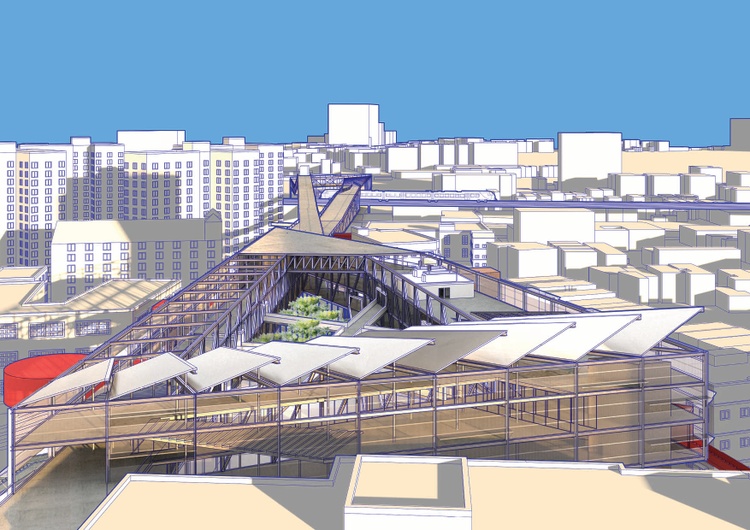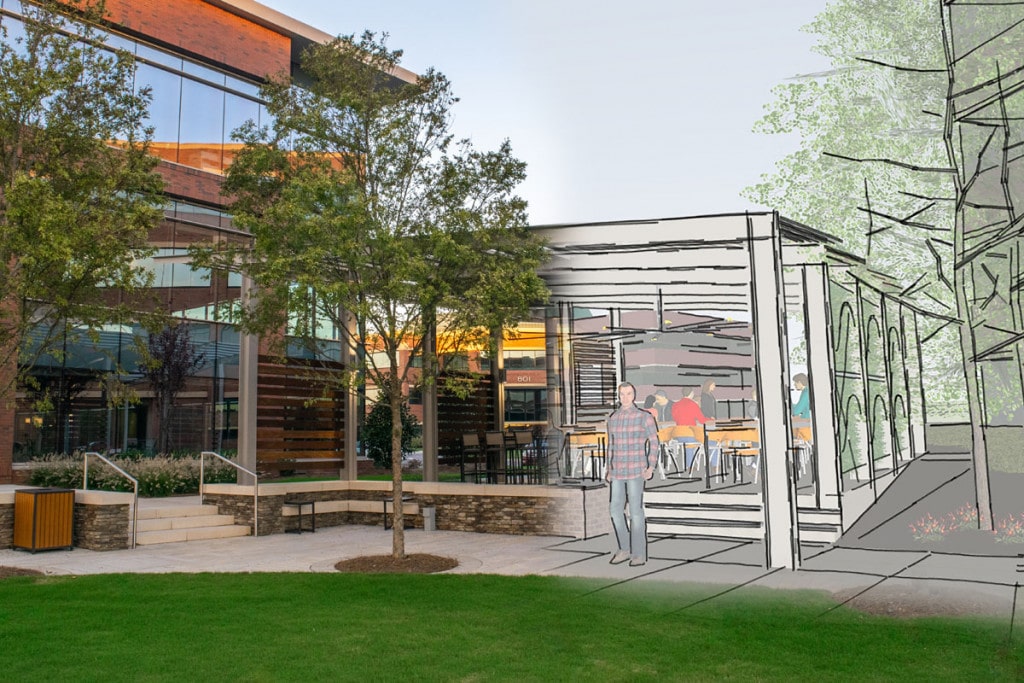Check Out Award-Winning Jobs by Prominent CDA Architects
Check Out Award-Winning Jobs by Prominent CDA Architects
Blog Article
A Detailed Overview of Architectural Styles and Their Influence on Modern City Preparation and Growth
Architectural designs have actually long acted as a mirror to the social values and technical developments of their time, playing a crucial role in shaping modern city planning and development. From the majesty of Neoclassicism to the utilitarian strategy of Brutalism, each design has actually presented one-of-a-kind ideas that affect urban visual appeals and performance. As contemporary difficulties develop, consisting of sustainability and community demands, understanding these historical frameworks ends up being crucial. The resulting discussion not just notifies future style methods however additionally raises essential questions regarding the equilibrium between heritage and development in our evolving city landscapes.
Historic Overview of Building Designs

As societies transitioned via the Middle Ages, Gothic style emerged, defined by its verticality and elaborate outlining, mirroring the spiritual ambitions of the age. The Renaissance marked a resurgence of classic ideals, merging art and architecture in ingenious manner ins which affected succeeding styles throughout Europe.

Today, architectural designs remain to progress, driven by globalization and sustainability concerns, showing a vibrant interaction between heritage and technology. This historical introduction underscores the value of architecture as a mirror of societal evolution and as a catalyst for city growth.
Trick Architectural Styles Explained
The variety of building styles shows the myriad influences that shape our built atmosphere, each symbolizing unique qualities and social importances. Key architectural styles include Classical, Gothic, Baroque, Innovation, and Postmodernism, each representing distinct historic contexts and aesthetic philosophies.
Classical architecture, rooted in old Greece and Rome, highlights balance, percentage, and using columns (cda architects). In comparison, Gothic architecture, thriving between Ages, is defined by pointed arcs, ribbed safes, and flying buttresses, creating an ethereal quality in sanctuaries. Baroque design, arising in the 17th century, is marked by grandeur, fancy embellishment, and a vibrant interaction of light and shadow
Innovation, which got momentum in the early 20th century, focuses on feature over form, utilizing brand-new products like steel and glass to create minimalist frameworks. Postmodernism, reacting versus the austerity of Modernism, accepts eclecticism and historic recommendation, usually incorporating spirited components and paradox.

Effect On Urban Preparation
In shaping the development of cities, architectural styles significantly affect city planning decisions. The selection of architectural design usually determines the aesthetic appeals, functionality, and overall personality of city atmospheres. For example, modernism, with its focus on minimalism and capability, encourages open areas and the combination of innovation, forming city layouts that prioritize efficiency and availability. Alternatively, typical styles might highlight historical preservation, bring about city styles that keep cultural heritage and advertise pedestrian-friendly atmospheres.
Additionally, architectural styles can impact zoning regulations and land make use of policies. Urban planners should take into consideration the prevailing building patterns when developing areas, ensuring that brand-new developments integrate with existing structures. This consideration fosters cohesive urban landscapes and enhances neighborhood identity.
The implementation of certain architectural styles can likewise influence socioeconomic variables within a city. For example, high-end contemporary designs might bring in upscale homeowners and companies, causing gentrification, while much more budget-friendly real estate solutions could focus on useful and sustainable designs to fit varied populations. Ultimately, the interplay between building designs and metropolitan preparation develops vibrant cities that mirror both historical context and contemporary demands, shaping the lived experiences of their inhabitants
Sustainability and Modern Architecture
Architectural designs play a pivotal function in dealing with contemporary challenges, especially in the world of sustainability. As city locations expand and ecological concerns increase, modern-day architecture progressively welcomes sustainable style concepts that prioritize energy effectiveness, resource preservation, and minimal ecological impact.
Contemporary building motions, such as biophilic layout and eco-friendly architecture, advocate for frameworks that balance with their environments, using natural products and Homepage promoting biodiversity. These styles frequently include renewable resource resources, such as solar panels and wind turbines, to decrease dependence on fossil fuels and reduced carbon footprints.
In addition, the assimilation of advanced technologies, such as smart structure systems, improves power monitoring, optimizing resource usage while making sure occupant comfort. Ingenious water management strategies, consisting of rainwater harvesting and greywater recycling, further add to sustainable metropolitan environments.
Notably, sustainability prolongs past environmental worries; it includes social and economic dimensions too. By cultivating community wellness and promoting inclusivity, modern architectural designs straighten with lasting advancement objectives. The advancement of architectural practices continues to form durable cities that not only satisfy the needs of the present however likewise protect the future for generations to come.
Area Interaction in Layout
Community involvement in style works as a vital bridge between engineers and the populations they offer, ensuring that the constructed setting shows the requirements and aspirations of its individuals. This collaborative procedure welcomes neighborhood members to contribute their insights and choices, promoting a feeling of ownership and obligation toward the rooms they occupy.
Efficient area involvement employs various techniques, such as workshops, surveys, and public online forums, to gather diverse viewpoints. These approaches promote a two-way discussion, allowing engineers to comprehend regional contexts while empowering homeowners to articulate their worries and desires. This inclusivity not just enhances the design high quality yet also advertises social Get the facts equity by attending to the distinct difficulties faced by marginalized groups.
In addition, area engagement can result in innovative solutions that might not arise in a traditional design process. By integrating neighborhood understanding and cultural worths, engineers can create rooms that reverberate even more deeply with individuals, boosting use and sustainability. Eventually, prioritizing area engagement in layout processes causes settings that nurture social communications, assistance wellness, and enhance area connections, consequently playing an essential duty in forming modern-day city landscapes.
Conclusion
Building styles have actually profoundly affected contemporary city preparation and growth, showing evolving social and technical contexts. The assimilation of historic aesthetic appeals with contemporary demands fosters metropolitan environments that focus on sustainability and neighborhood involvement. As cities remain to grow and adapt, the ongoing dialogue in between architectural my site heritage and modern layout concepts will remain necessary in developing inclusive, vivid areas that improve lifestyle and advertise social equity. The future of urban development hinges on this unified balance.
Report this page